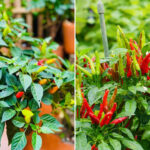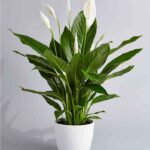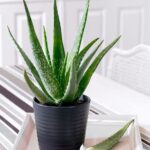In feng shui, greenery is believed to be a source of positive energy, invigorating living spaces and improving the physical and mental well-being of the inhabitants. Therefore, having a dead plant in the house is considered a bad omen, which can deplete energy and lead to stagnation. As a result, family members may experience fatigue, apathy, frequent illnesses, and relationship conflicts.
While you may be skilled at taking care of plants, if you don’t choose the right spot to place them, all your efforts may be in vain, no matter how much time and energy you invest.
To effectively nurture houseplants, it’s crucial to be aware of the areas to avoid. Here are five places you should not put greenery in your home:
Avoid placing plants near electrical appliances
People often tend to place plants near the TV to beautify the space. However, this can lead to negative consequences that you might not have anticipated. Plants need regular watering, and this moist environment can negatively impact the lifespan of electronic devices. Moreover, the heat and radiation emitted by appliances can hinder the plant’s metabolism, resulting in stunted growth and wilted leaves.
The same goes for other electrical appliances like refrigerators and air conditioners, especially the latter. Whether it’s the cold air in summer or the hot air from the heating system in winter, both can be detrimental to plants. The dry air from the air conditioner can cause plants to lose moisture rapidly. If left in this arid environment for too long, plants will quickly shed their leaves and wither, affecting their vitality and beauty.
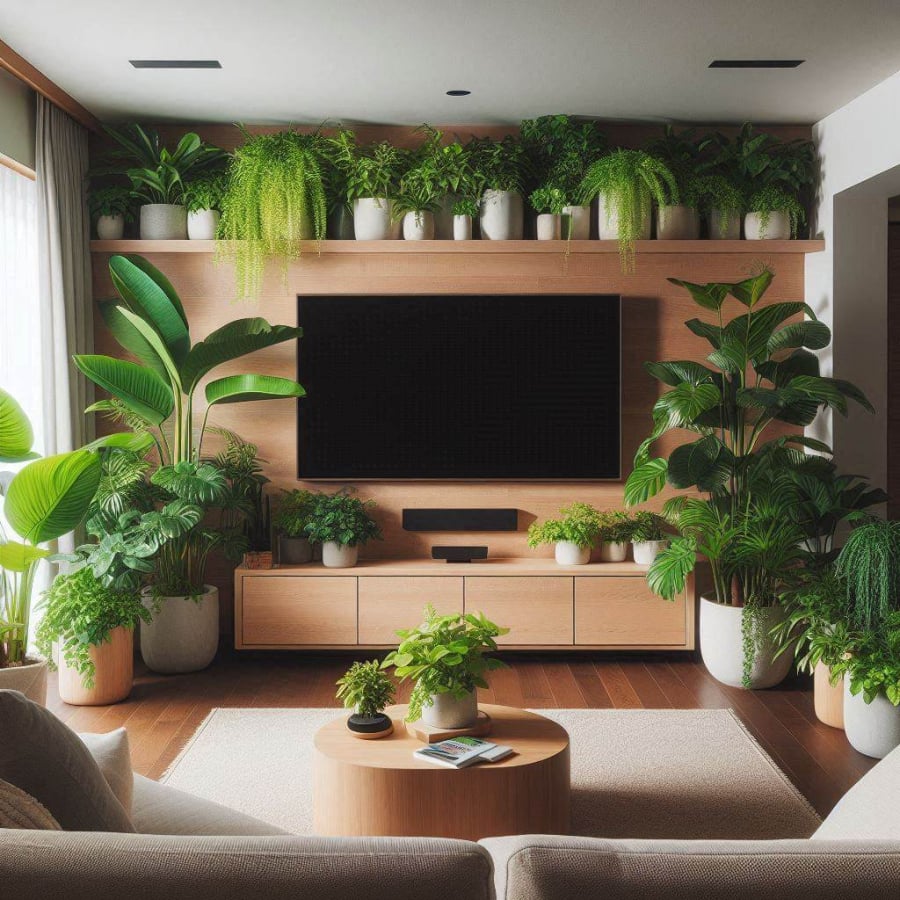
The dry air from the air conditioner can cause the plant to lose moisture and wither.
Avoid placing greenery in the kitchen
Some people choose to place potted plants in the kitchen, hoping to bring freshness and vibrancy to the space. However, kitchens often have greasy smoke and steam, which can negatively affect the health of the plants. Especially in households that frequently fry or stir-fry food, the oil smoke will cling to the leaves, hindering the plant’s ability to photosynthesize. Moreover, the ventilation and lighting conditions in kitchens are usually not ideal, making it challenging for plants to thrive.
The temperature in the kitchen also fluctuates; it becomes hot while cooking, and the temperature drops quickly when not in use. These variations can impact the plant’s roots, leading to various issues with their vitality. Even sturdy plants like spider plants or bird of paradise will struggle to survive in this environment long-term.
Furthermore, kitchens are typically small spaces, and adding plants can make the area feel cramped and hinder movement. Therefore, careful consideration is necessary before introducing greenery into this space.
Avoid placing plants near the entrance
People often like to place plants near the entrance to create a welcoming atmosphere for guests. However, this area usually doesn’t provide sufficient natural light, and the temperature fluctuates significantly when the door is opened and closed. These conditions are not ideal for the growth of plants and flowers.
Greenery typically thrives in stable temperatures and well-ventilated areas. However, the inconsistent temperature and uneven airflow near entrances can hinder their growth. Even with careful tending, plants in these locations may struggle to survive and are at risk of dying prematurely. Therefore, placing plants near the entrance is not an ideal way to enhance your living space.
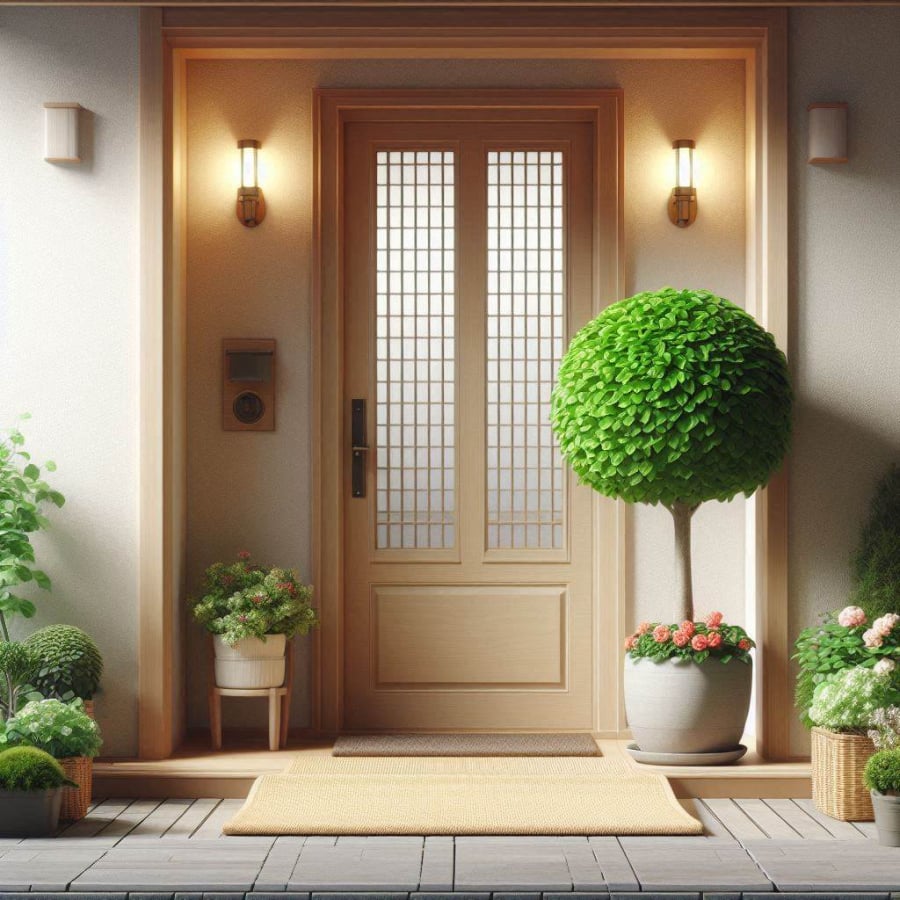
The inconsistent temperature and airflow near entrances can hinder plant growth.
Avoid placing plants in hallways
In many homes, long hallways are decorated with greenery to enhance the space without compromising the main living areas. However, this practice presents several challenges for the plants’ survival.
Hallways often lack natural light and proper ventilation, creating an unfavorable environment for plant growth. Prolonged insufficient light exposure can cause leaves to turn yellow, while the roots may rot due to moisture. Moreover, stagnant air in hallways provides the perfect breeding ground for pests and diseases, further compromising the health of the plants. Therefore, placing greenery in hallways is not a suitable option for decoration and ensuring their longevity.
Avoid placing plants in bathrooms
Many people enjoy having plants in their bathrooms, not only for their ability to absorb odors but also as an interesting decorative element. In the morning, the presence of greenery can provide a refreshing and energizing feeling while one prepares for the day.
However, bathrooms are not an ideal environment for plants to thrive. Insufficient natural light and high humidity create conditions conducive to bacterial and mold growth, hindering plant development. In such damp conditions, many plants are at risk of root rot or leaves turning black.
Additionally, liquids from shampoo and shower gel can splash onto the potting soil, altering the pH and affecting the plant’s growth. If you’ve noticed that your bathroom plants don’t last long, it’s not necessarily due to your care but rather the unsuitable environment.
Ideal locations for placing greenery
When choosing where to place your plants, consider the lighting and climate conditions of each area in your home. Here are some suitable spots:
– Balconies or windowsills facing south: This is the perfect spot for sun-loving plants like bougainvillea or clock vine. With abundant sunlight, these plants will flourish and bloom vibrantly.
– North-facing rooms: If you place plants here, shade-tolerant varieties like money plants, snake plants, or mirror grass will thrive. They can grow well even in low-light conditions.
– Areas with sufficient diffused light: These spots are ideal for plants like peace lilies, snake plants, and Chinese evergreens. They can make use of the gentle light and still grow well in these conditions.
Choosing the right location for your plants ensures their health and adds harmony and aesthetic appeal to your living space.
Information provided is for reference only
The 3 Moisture-Absorbing Plants That Are Excellent at Cleaning Mold for the Humid Season; Plant These in Your Home and Attract Wealth Instantly
As winter approaches, it’s time to bring nature indoors. These three houseplants will not only add a touch of greenery to your home but also combat mold and dampness. Say goodbye to musty smells and hello to a fresh, inviting space. Purify your air and attract prosperity with these easy-to-care-for plants.

























